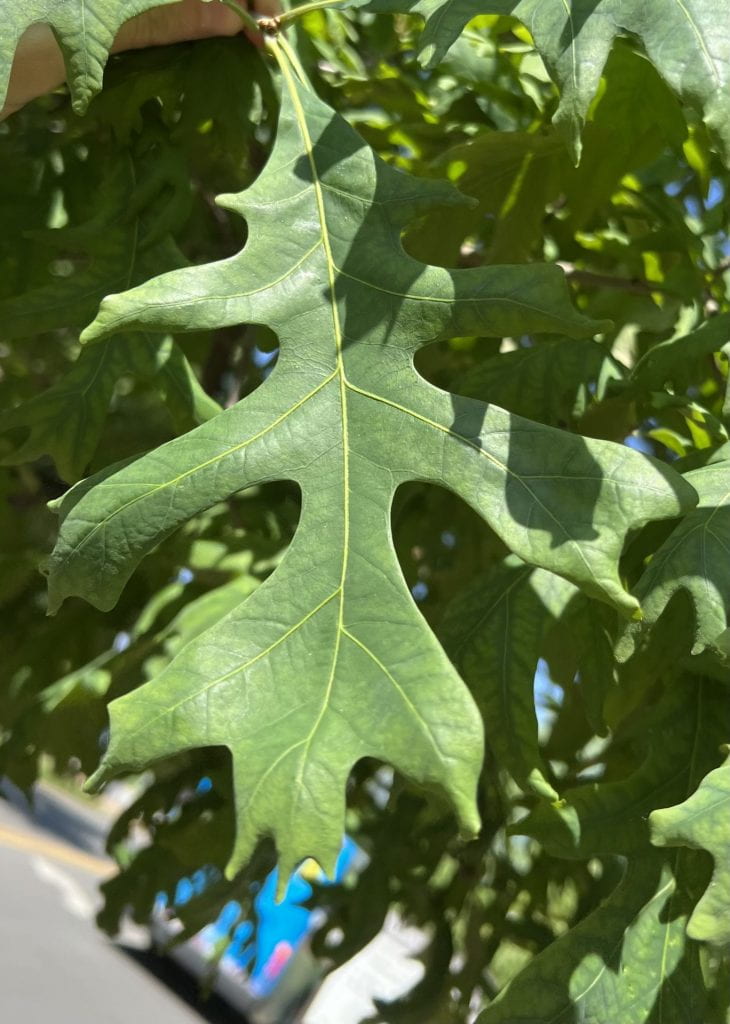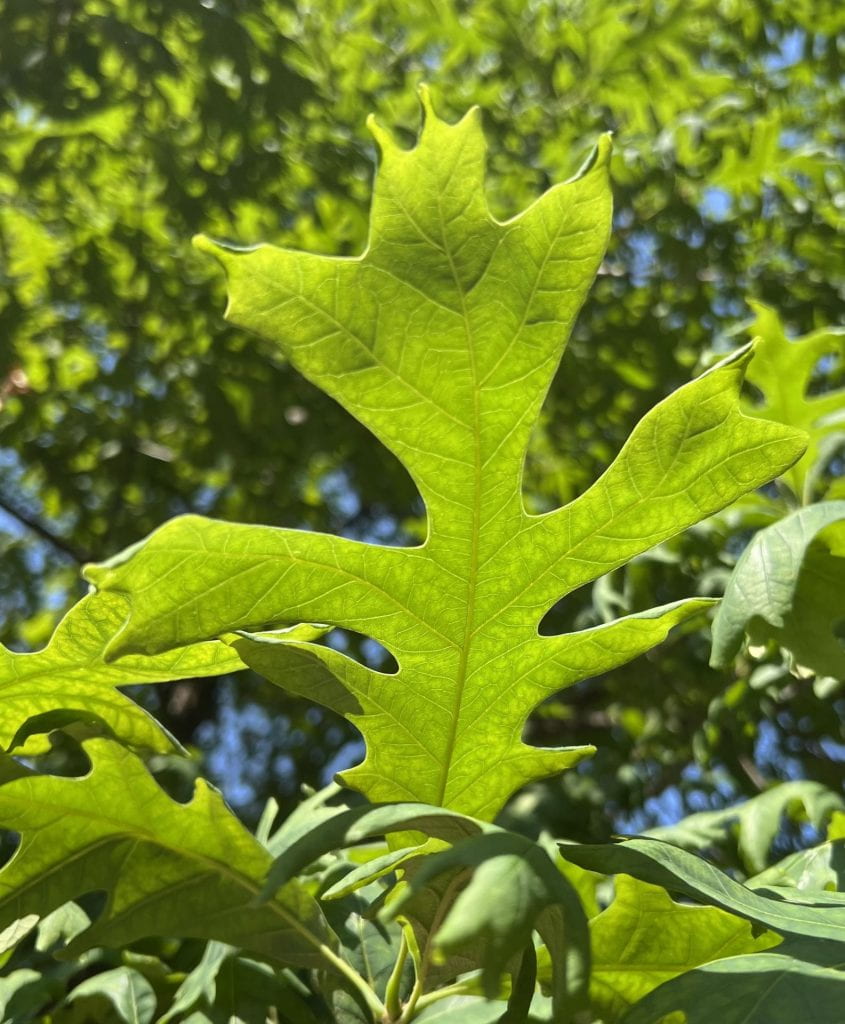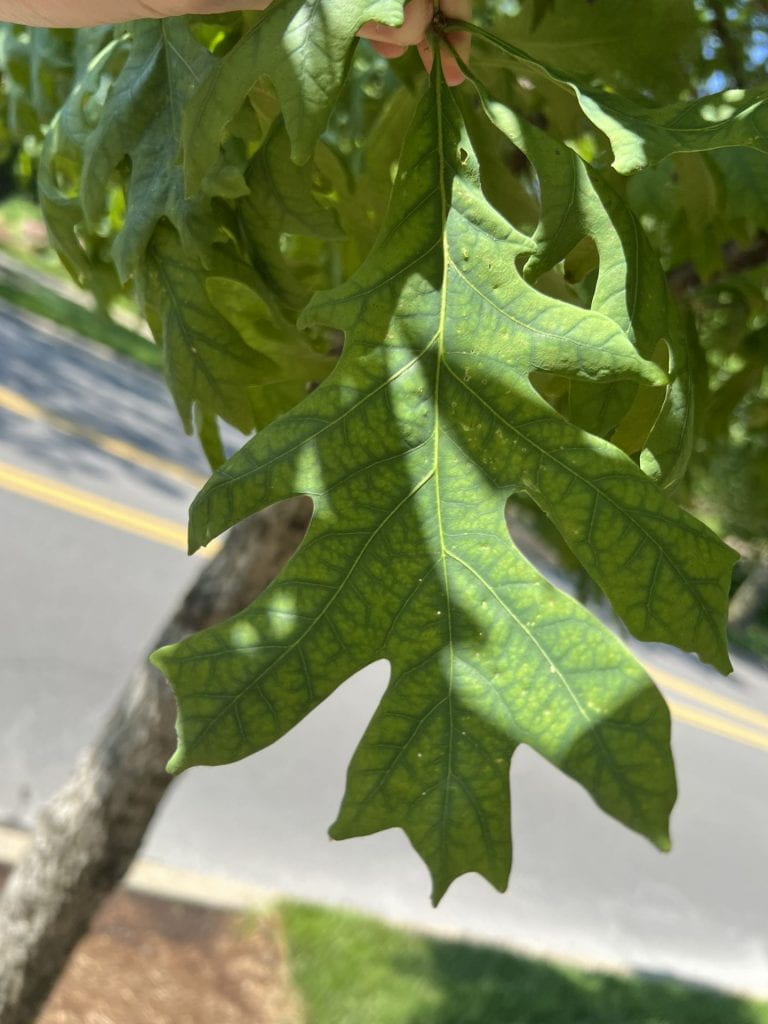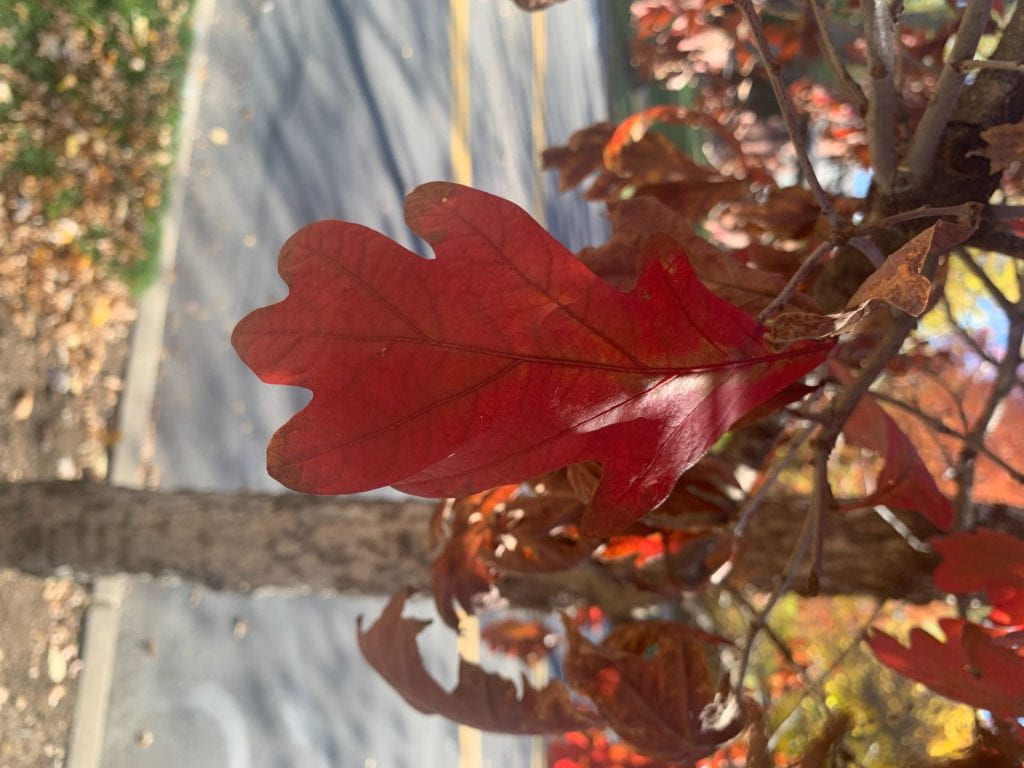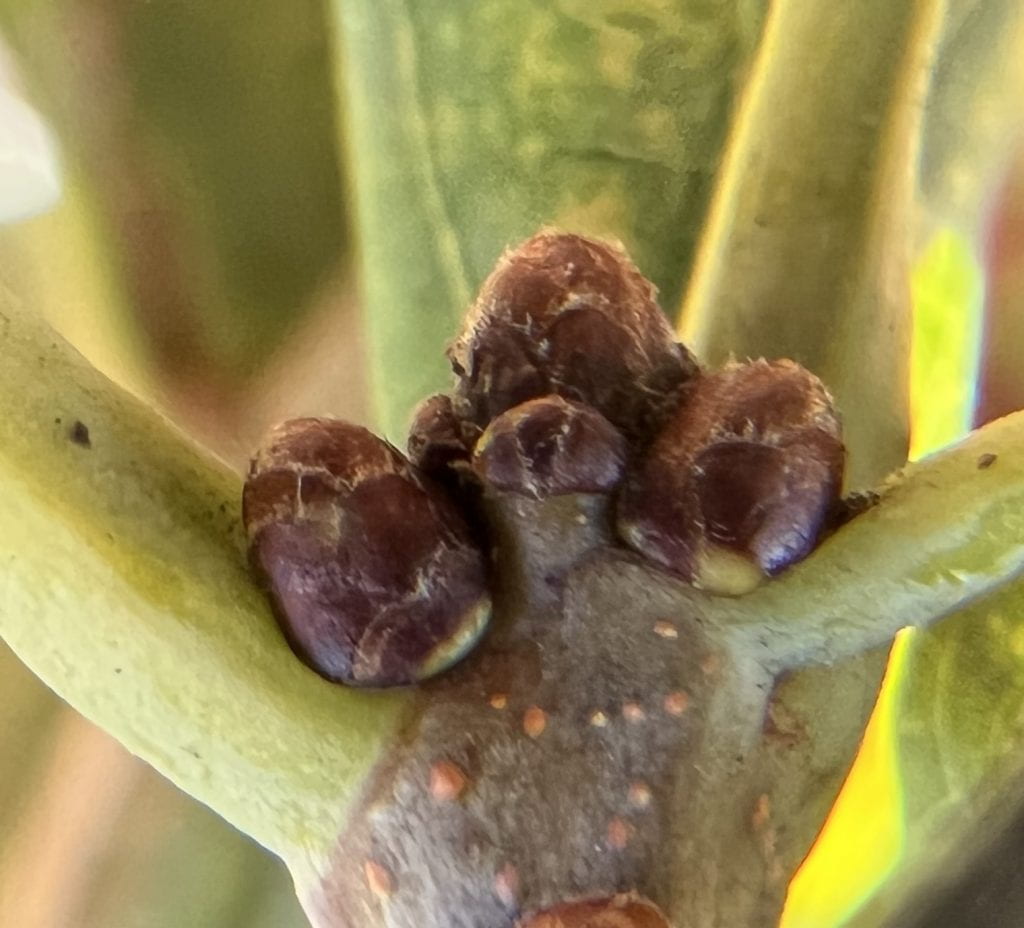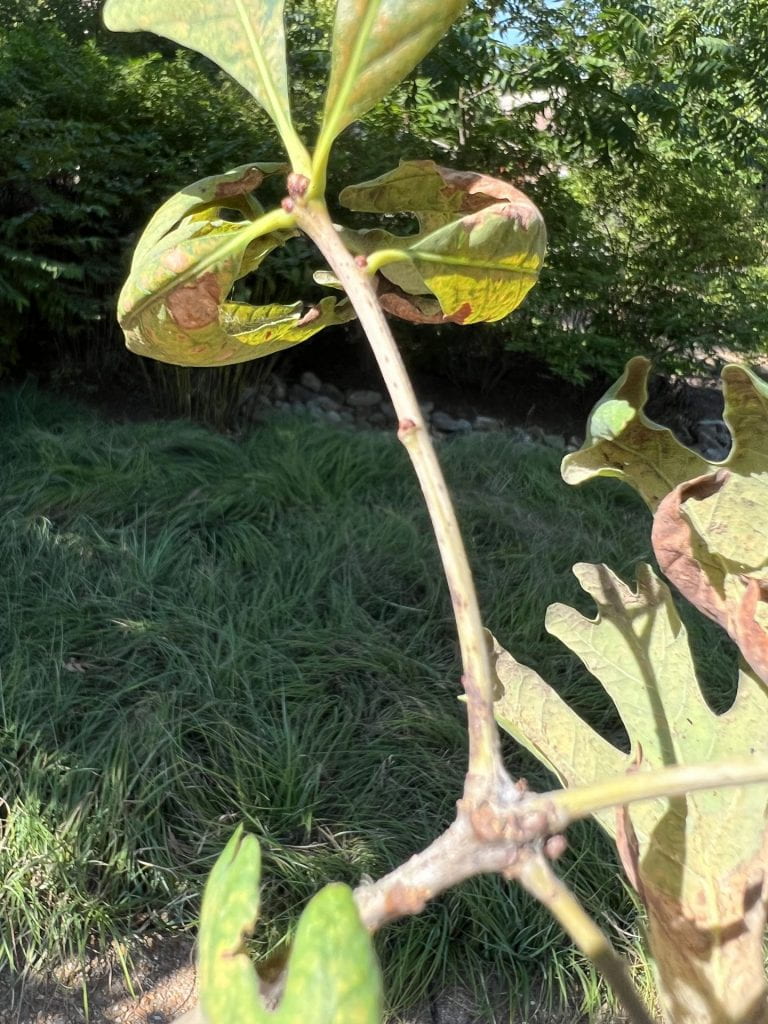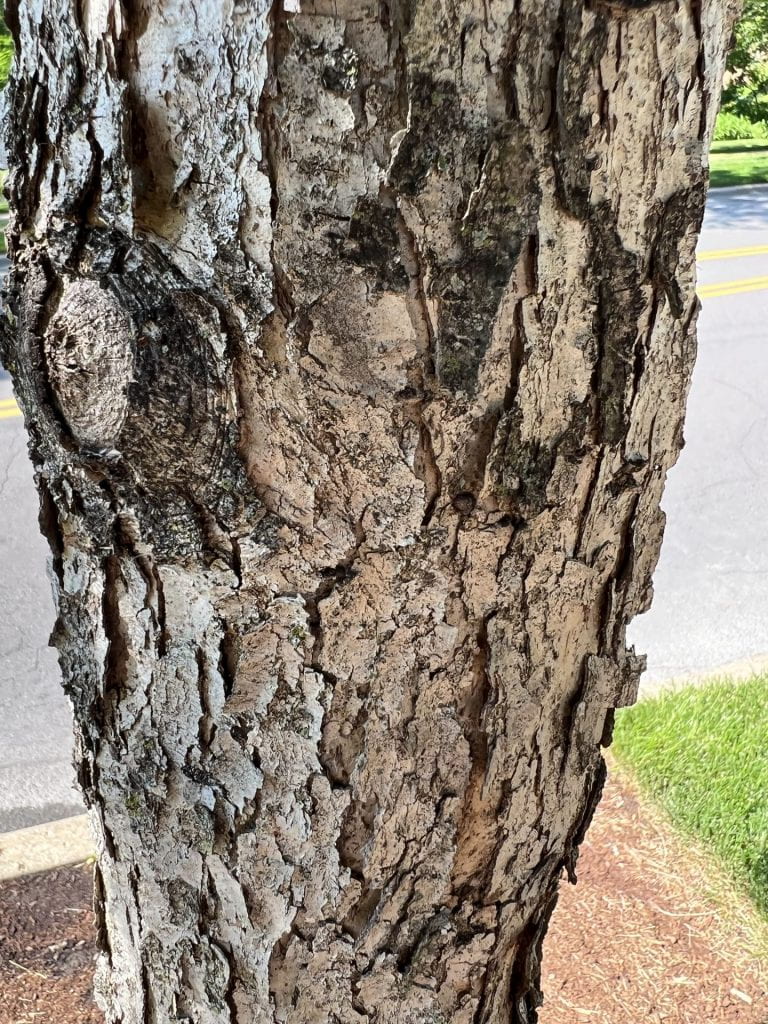White Oak
Arbor Walk #43, Treekeeper ID #2690
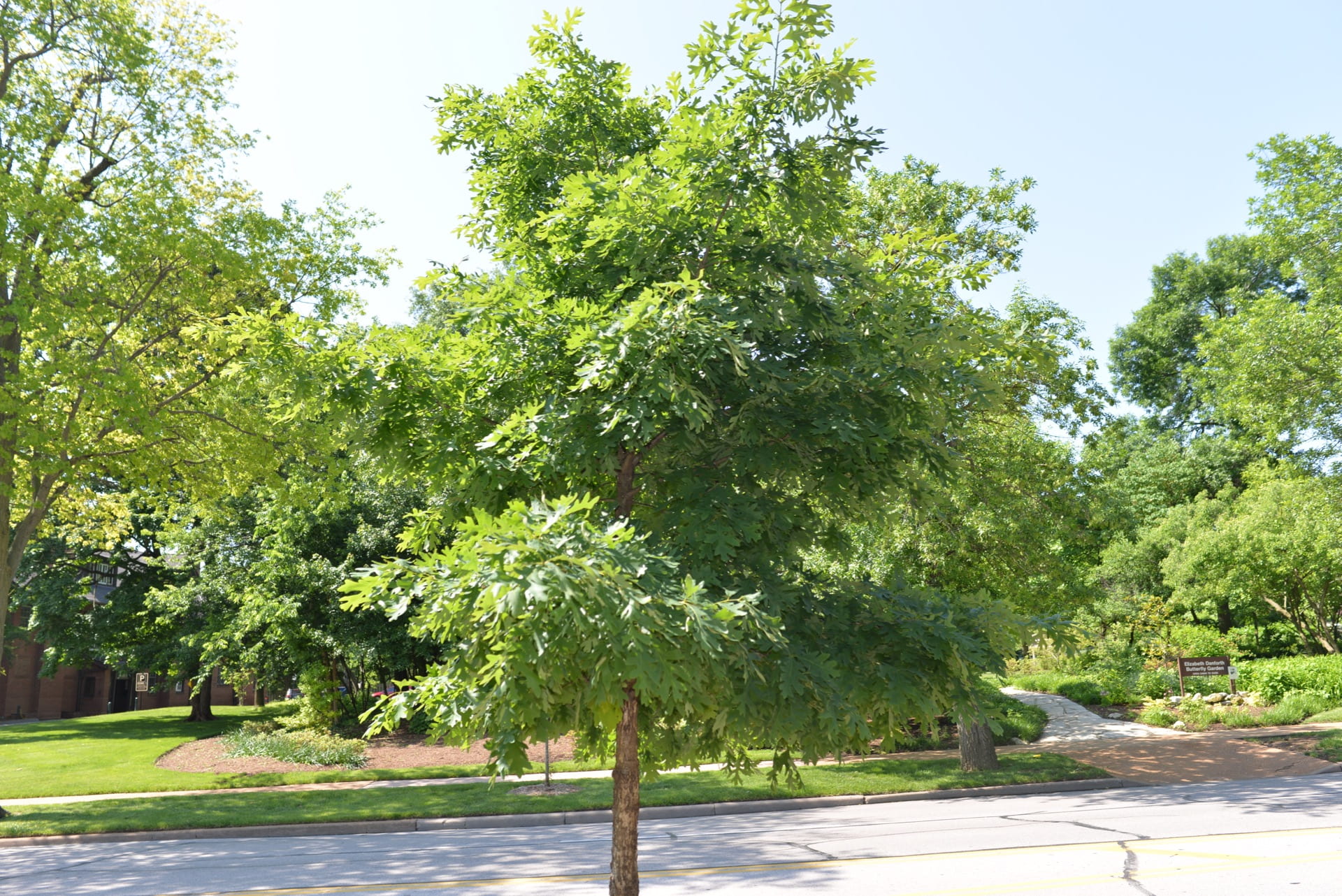
The White Oak is one of the most ubiquitous trees in all of the eastern United States, memorable less for any particular physical characteristic and more for its cultural significance across the country. The White Oak is the state tree of Illinois, Connecticut, and Maryland, and numerous trees along the East Coast have stood in towns or cities since before European occupation. This tree is very large (growing to a height of 50-80 feet) and its wide-spreading horizontal branches provide excellent shade for larger landscapes and parks. It is natively found in drier upland environments in Missouri and throughout the Midwest.
The White Oak is a member of the subgenus of white oaks. These oaks are distinguishable from other oaks from their smooth lobe tips (no awns), their hairless leaf undersides, and their lighter, flakier bark. The acorns of white oaks are also less tannic, meaning that they require less processing to become safe and palatable.


GPS Coordinates
N/A
Percent Concrete
N/A
Distance to Buildings
| Year | Close Building #1 | Close Building #2 | Close Building #3 |
|---|---|---|---|
| 2020 | Danforth University Center, 21.4 m | Mallinckrodt Center, 27.61 m | Stix International House, 75.66 m |
Distance to Other Species
| Year | Close Species #1 | Close Species # 2 | Close Species # 3 |
|---|---|---|---|
| 2020 | Pin Oak, 8.32 m | Northern Red Oak, 11.36 m | Red Maple, 15.71 m |
Standard Measurements
| Year | Height (m) | DBH (cm) | Caliper (m) | Crown Diameter N-S (m) | Crown Diameter E-W (m) | Average Crown Diameter (m) |
|---|---|---|---|---|---|---|
| 2020 | 7.8086 | 15.1 | N/A | 3.19 | 3.37 | 3.28 |
| 2023 | 7.19 | 13.2 | N/A | 3.9 | 4.1 | 4 |
Nests and Pests
| Year | Description |
|---|---|
| 2020 | Small, hard, round galls on the underside of some leaves A small ball of silk, which may be an egg sac |
Leaf Identification
The leaves of the White Oak are simple (no leaflets), alternately arranged on the stem, pinnately veined, and lobed. There are 7-9 moderately to deeply divided rounded, finger-like lobes. The leaf shape is elliptic to slightly obovate, and 5″-9″ in length. The leaves are green above and yellow-green below, turning yellow or red in the fall.
Twig and Bud Identification
The twig is gray-brown, not zig zag, and smooth. The terminal buds are many-scaled and clustered, with three or more buds per cluster.
Bark Identification
The bark is light gray-brown and covered in thin plates, which will occasionally flake.
Fruit Identification
The fruit of the White Oak is an acorn. The acorn is nearly globular or elliptic, up to 1″ long, with a thick cap-like cup of warty scales that may be tall but does not cover much of the nut. The acorn matures in the fall.
Flower Identification
The flowers of the White Oak are monoecious (male and female flowers exist separately but on the same tree). The staminate (male) flowers are hanging green or greenish-red catkins (long, slender clusters of unisexual flowers), and the pistillate (female) flowers are inconspicuous and in small clusters on the leaf axils. The flowers bloom in spring.
Oak ID Tips
- The White Oak has a leaf that is slightly longer than the Swamp White Oak leaf, and the lobes of the White Oak are more deeply divided. As well, the Swamp White Oak has a much paler leaf underside, and has less flaky, darker bark than the White Oak
- The White Oak looks very similar to the non-native English Oak. In a landscaping setting where the English Oak may be planted or naturalized, the White Oak can be distinguished by its significant petiole (the English Oak petiole is quite short) and its tapering, pointed base (the English Oak often has an auriculate [ear-lobed] base). The English Oak bark is not flaky.


